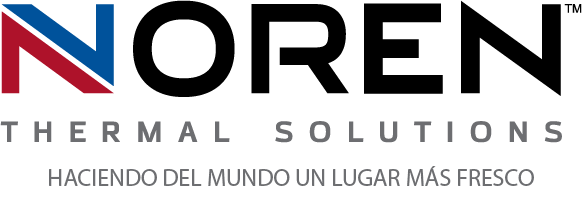 The ability to automate processes and repetitive procedures has been one of the biggest advantages of modern technology. In every industry, it’s proven valuable as both a time-saving endeavor and a cost-saving investment, helping companies streamline everything from administrative processes to assembly lines and more. The large-scale adoption and implementation of automated technologies has been possible due to several different, factors. While the streamlining of electrical thermal management with the help of heat exchangers has been only one of those factors, it’s been an essential one. They provide the high-performance cooling necessary for advanced applications in a manner that’s virtually automated itself.
The ability to automate processes and repetitive procedures has been one of the biggest advantages of modern technology. In every industry, it’s proven valuable as both a time-saving endeavor and a cost-saving investment, helping companies streamline everything from administrative processes to assembly lines and more. The large-scale adoption and implementation of automated technologies has been possible due to several different, factors. While the streamlining of electrical thermal management with the help of heat exchangers has been only one of those factors, it’s been an essential one. They provide the high-performance cooling necessary for advanced applications in a manner that’s virtually automated itself.
The push for greater automation
Every new piece of technology, system, or process that a company implements is typically designed to improve that company’s bottom line and/or overall efficiency. With automated systems, that improvement is exponentially more dramatic than most other forms of technology. In addition to saving time and money, automated solutions help free up employee time to focus on higher-level, more profit-driven tasks, helping companies grow faster and more successfully. However, this is only true when automated technology is able to run efficiently and at minimal cost, and thermal management has long been one of the biggest challenges to any technology’s efficiency.
The challenges of traditional cooling
Since the goal of automated technology is to optimize employees’ time as well as to increase a company’s operational efficiency, traditional electrical cooling solutions are usually not a good fit. Cooling units like air conditioners and air compressors can keep electrical enclosures cooled, but they also tend to use up large (and costly) amounts of energy each day. They also require frequent maintenance, and their many moving parts can break down often, making them less than ideal for applications that are meant to operate autonomously. These high-maintenance needs stem from the demanding ways in which traditional solutions approach electrical cooling. The processes necessary to generate chilled air and circulate it aren’t designed to operate as efficiently and automatically as advanced technology demands.
Streamlining electrical thermal management
For applications like automated technologies to succeed, they need more appropriate thermal management solutions that can keep up with their demands. In many cases, the answer is to utilize the right type of heat exchanger to streamline electrical cooling overall. Unlike more conventional cooling, heat exchangers don’t need to use chilled air to prevent overheating. Instead, they transfer heat using cooling fluid in a looped system, which makes them much more cost and energy efficient. Because the heat transfer process can be largely self-contained, it’s proven to be the ideal cooling solution for many different automated technologies.
For more information about how heat exchangers make automated thermal management possible, call Noren Thermal Solutions in Taylor, TX, at 866-936-6736.







